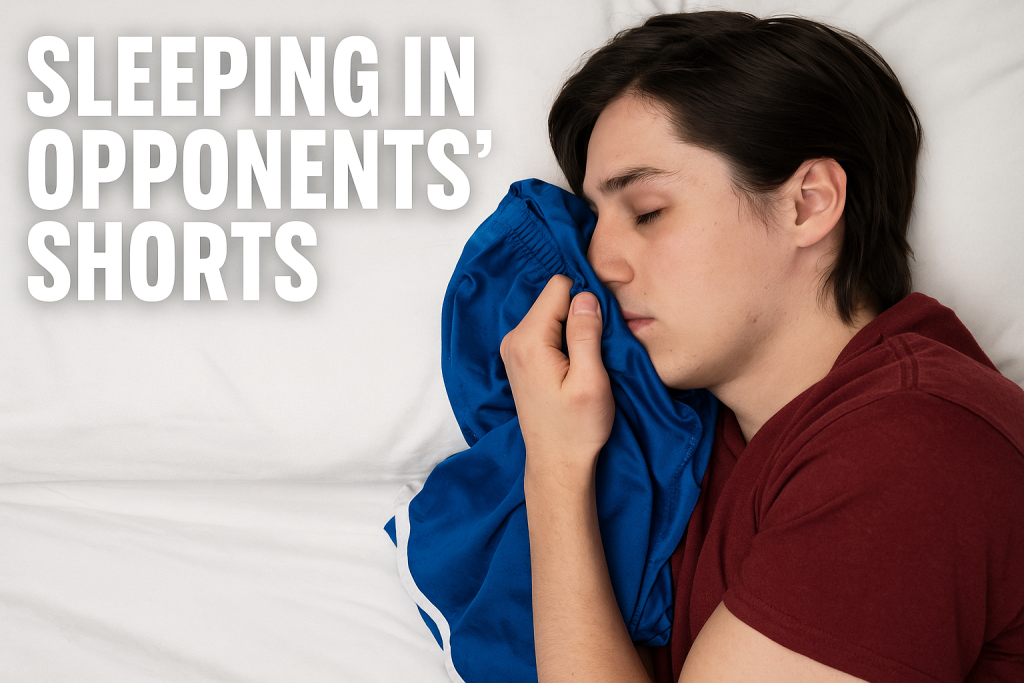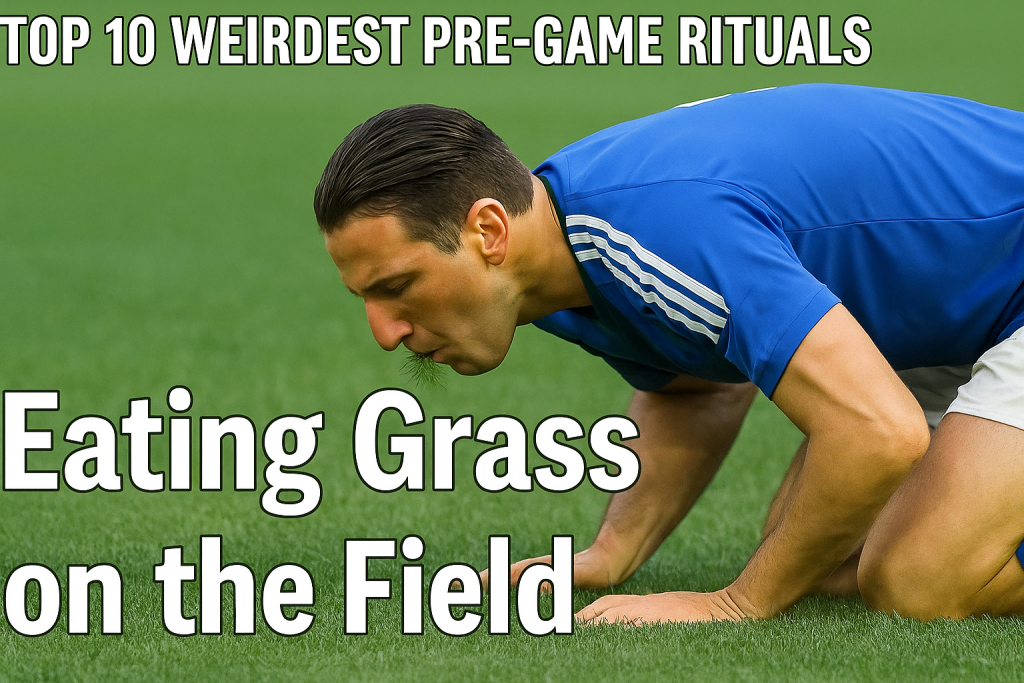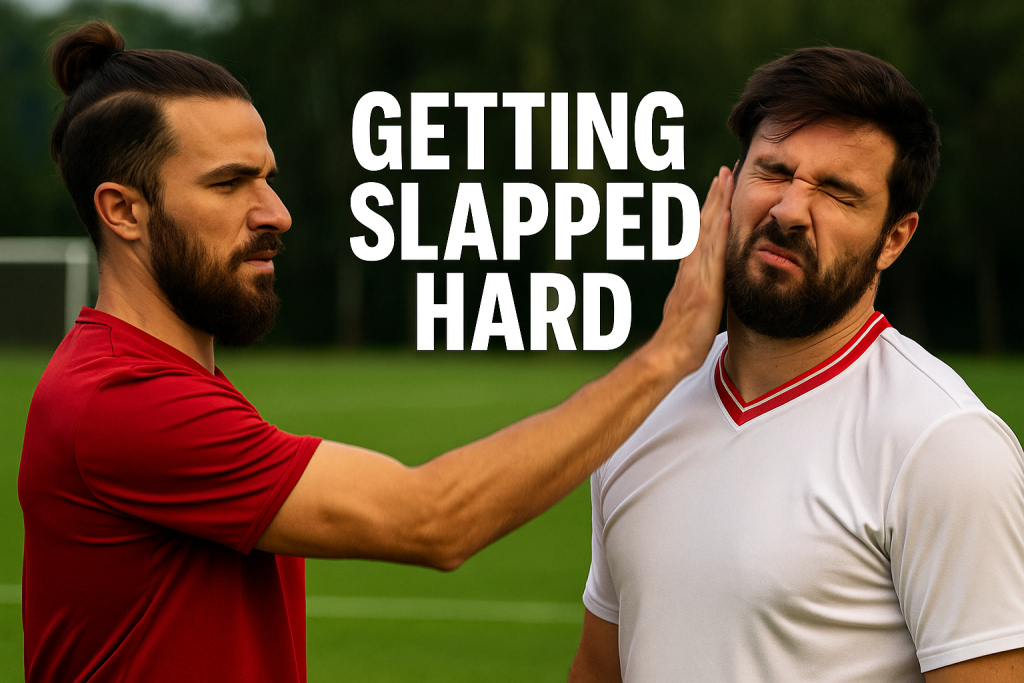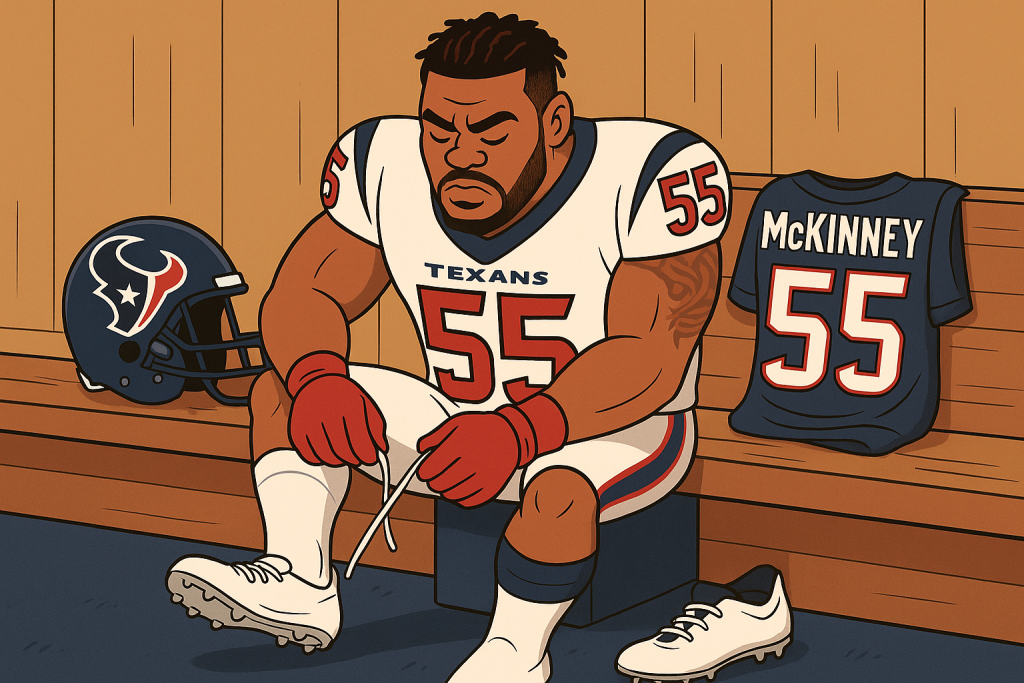Strange but Successful: Top 10 Sports Rituals That Deliver Results
Athletes often rely on pre-game rituals to boost performance and confidence—ranging from simple routines like double-knotting shoelaces to quirky habits like last-minute gym sessions. Whether these actions offer a physical edge or just mental reassurance, many swear by them. From high school teams to pros like the Wilkes-Barre/Scranton Penguins, such rituals are common. This article dives into ten of the weirdest pre-game habits in sports and explores the psychology behind them.
Top 10 Weirdest Pre-Game Rituals (That Actually Work?)
The following are ten unique and unconventional pre-game rituals compiled from the research material. For each ritual, we will describe the behavior, the athlete(s) who practice it, its claimed effectiveness, and the potential psychological mechanisms at play.
Ritual 1: Sleeping in Opponents’ Shorts

Former NBA player Jason Terry would sleep in the opposing team’s game shorts the night before every game. He collected shorts from all 30 NBA teams for this purpose.
Terry believed this ritual gave him a psychological advantage and extra motivation. This superstition reportedly stemmed from doing the same before winning the 1997 national championship.
This behavior might subconsciously help Terry familiarize himself with his opponents or symbolically “wear” their strengths. It could be a form of opponent-focused mental preparation aimed at boosting his own confidence. The uniqueness of the practice might also enhance Terry’s personal identity and further solidify his belief in success.
Ritual 2: Wearing Unwashed Lucky Socks

Tennis legend Serena Williams wears the same pair of socks throughout an entire tournament, and if she keeps winning, she continues to wear the unwashed socks in the next match.
Williams believes these socks bring her good luck, and she has attributed losses to changing this habit. Her 23 Grand Slam singles titles, the most in the Open Era, seem to suggest her rituals help her stay focused, confident, and handle the immense pressure of elite competition.
This is a classic “lucky charm” behavior, providing comfort and confidence by creating a strong association with past successes. This superstitious act likely enhances Williams’ mental readiness before matches, helping her focus and reduce anxiety.
Ritual 3: Eating Chicken Before Every Game

Baseball Hall of Famer Wade Boggs ate chicken before every game, earning him the nickname “Chicken Man”. He also had other precise pre-game habits, such as taking 150 ground balls in practice, starting batting practice at 5:17 p.m. for night games, and running sprints at 7:17 p.m.
Boggs felt better eating lighter food and noticed his batting average improved after starting this ritual. He had a highly successful 18-year career, including 12 All-Star selections and a World Series win with the New York Yankees in 1996.
This ritual provided a sense of regularity and predictability. The association with success reinforced the behavior. While there might be physiological aspects related to digestion and energy levels, the primary positive impact appears to be psychological. Boggs even published a book of his favorite poultry recipes, highlighting the significance of this ritual to his personal and professional life.
Ritual 4: Eating Grass on the Field

Former Louisiana State University (LSU) football coach Les Miles was known for eating grass from the field before games.
Miles believed it helped him feel more grounded and connected to the field and the game. He even claimed the grass at Tiger Stadium tasted the best.
This is a symbolic act representing a direct connection with the playing environment. It might create a feeling of being one with the game, enhancing his focus and commitment. The unique nature of this behavior could also enhance his personal persona and further solidify his sense of control over the game.
Ritual 5: Getting Slapped Hard

Former NFL defensive tackle John Henderson would have his trainer slap him in the face as hard as possible before every game.
Henderson claimed the pain helped him get pumped up and ready to play. One article notes that while this ritual might seem unusual, there’s no denying it’s an effective way to get psyched up for competition.
This behavior would rapidly increase Henderson’s arousal level and aggression. It likely served as a physical trigger to help him enter a competitive state. The adrenaline rush was likely a key factor in the psychological effect of this ritual.
Ritual 6: Specific Order of Dressing

Houston Texans linebacker Benardrick McKinney had to put on all his left-side gear (socks, shoes) before his right, believing it brought good luck. Former New York Giants quarterback Eli Manning wore a lucky T-shirt for every regular-season game. Ernie Thompson also had a specific order for putting on all his equipment.
McKinney felt it was bad luck if he didn’t follow this order. Manning’s T-shirt was associated with his two Super Bowl wins with the Giants. Thompson found the ritual calming.
These rituals create a sense of order and control. The belief that deviating from the order would bring “bad luck” reinforces its importance. This focus on detail likely helps athletes mentally prepare for the game and reduces pre-game anxiety.
Ritual 7: LeBron James’ Chalk Toss

NBA superstar LeBron James performed his iconic chalk toss ritual before almost every game.
James stated it helped him focus and get locked in on the task at hand, and he felt the fans enjoyed it.8 The ritual also energizes the crowd.10 Some speculate James’ move is a tribute to his childhood idol Michael Jordan, who also occasionally used chalk before games to improve grip.10
This ritual is James’ personal moment of focus and preparation. It also has a performative aspect, engaging the audience and building a game-day atmosphere. Over time, the ritual has become an integral part of James’ image.
Ritual 8: Kolo Touré Last Out of the Tunnel

Footballer Kolo Touré insisted on being the last player to leave the tunnel and step onto the pitch.
Touré was very particular about this ritual.
This might have provided Touré with a sense of control or a unique moment of personal focus before joining his team on the field. However, this ritual once backfired, causing him to be booked (receive a yellow card) for being 30 seconds late for a Champions League match against Roma. This shows that strict adherence to rituals doesn’t always guarantee positive outcomes.
Ritual 9: Rafael Nadal’s Compulsive Habits

Tennis star Rafael Nadal has numerous specific habits before, during, and after matches, including precisely placing his water bottles, adjusting his attire, and stepping over lines on the court with his right foot.
Nadal states these habits help him get into the match, order his surroundings, and focus his mind. He denies they are superstitions. He sees it as a way of positioning himself in the match and making his environment match the order he seeks in his head.
These habits create a sense of order and predictability, which can help reduce anxiety and enhance focus. They also serve as triggers to help Nadal enter a specific mental state. While some might view these as obsessive tendencies, Nadal emphasizes their role in his mental preparation and concentration.
Ritual 10: George Kittle’s Headbutt and Vomit

NFL tight end George Kittle reads a letter from his dad before every game, then headbutts a wall until he vomits.
Kittle says vomiting makes him feel better and faster. He believes headbutting the wall allows him to experience the “first hit” of the game beforehand.
The letter from his father likely provides emotional motivation. The headbutting and vomiting are likely extreme ways for him to increase his arousal level and release pre-game tension. This intense physiological response might help him reach the mental state he needs for the game.
Pre-game rituals are so prevalent in sports because they offer athletes a multitude of psychological benefits.
Why Athletes Stick to Rituals: The Psychology Behind the Habit

Pre-game rituals may seem odd, but for athletes, they serve powerful psychological purposes.
They create a sense of control in high-pressure, unpredictable environments, which can help reduce anxiety and build mental resilience. Even simple actions—like listening to a playlist or dressing in a specific order—can stabilize emotions and sharpen focus.
Rituals also help boost concentration, reinforce procedural memory, and enhance confidence by increasing belief in one’s ability to perform. In many cases, it’s not the ritual itself, but the belief in the ritual, that drives performance—similar to a placebo effect.For some, rituals reconnect them with personal motivation and purpose, while team rituals (like chants or huddles) build group cohesion and shared energy.
Do Rituals Actually Work?
Research shows that structured pre-performance routines (PPRs) can improve execution in skills-based sports like free throws or golf. They help athletes focus on key tasks, reduce distractions, and manage anxiety. Studies also suggest that rituals can reduce brain responses to failure, offering emotional protection under pressure.
Importantly, personal rituals are more effective than copying others’ habits. Athletes gain more psychological benefit when the ritual is meaningful to them.
Patterns Behind the Wildest Rituals
Looking at real-life examples, common threads emerge:
- Controlling the uncontrollable (e.g. specific dressing order)
- Tapping into past success (e.g. lucky socks or chicken dinners)
- Getting hyped (e.g. being slapped or headbutting a wall)
- Reaching a focused mental state (e.g. chalk toss or bottle placement)
Some rituals lean toward superstition, others are deliberate mental preparation—but both can drive performance if the athlete believes in their power.In the end, whether scientific or symbolic, these pre-game habits reflect the powerful bond between mindset and performance in the world of sports.

Conclusion: The Power of Personal Rituals
Pre-game rituals, however quirky they may seem, play a meaningful role in helping athletes feel focused, confident, and in control. From Jason Terry sleeping in opponents’ shorts to Serena Williams’ lucky socks, these routines reflect deeper psychological needs.
Research shows that pre-performance rituals can boost attention, reduce anxiety, and enhance self-belief—even if the effect is partly placebo. The key is personalization: routines work best when they’re tailored to the individual. In the end, these wild habits remind us just how powerfully the mind and body connect in the quest for peak performance.
If this content infringes on any rights, please contact me for immediate removal.





Thanks for sharing! I learned something new today.
I am so happy to read this. This is the type of manual that needs to be given and not the accidental misinformation that is at the other blogs. Appreciate your sharing this best doc.
I just could not go away your web site before suggesting that I actually loved the standard info an individual supply for your guests? Is going to be back steadily to check up on new posts
This design is incredible! You definitely know how to keep a reader entertained. Between your wit and your videos, I was almost moved to start my own blog (well, almost…HaHa!) Fantastic job. I really loved what you had to say, and more than that, how you presented it. Too cool!
I?ve read some good stuff here. Definitely worth bookmarking for revisiting. I wonder how much effort you put to create such a excellent informative website.
I’m often to running a blog and i really appreciate your content. The article has actually peaks my interest. I’m going to bookmark your website and maintain checking for brand new information.
Sweet blog! I found it while browsing on Yahoo News. Do you have any suggestions on how to get listed in Yahoo News? I’ve been trying for a while but I never seem to get there! Cheers
Do you mind if I quote a few of your articles as long as I provide credit and sources back to your site? My blog is in the exact same niche as yours and my users would definitely benefit from some of the information you present here. Please let me know if this alright with you. Appreciate it!
Heya i?m for the first time here. I found this board and I find It truly useful & it helped me out a lot. I hope to give something back and aid others like you helped me.
I’m curious to find out what blog system you have been using? I’m having some minor security problems with my latest site and I would like to find something more safe. Do you have any recommendations?
Admiring the commitment you put into your website and detailed information you offer. It’s awesome to come across a blog every once in a while that isn’t the same old rehashed information. Wonderful read! my Google account.
Nice post. I study something more difficult on totally different blogs everyday. It will always be stimulating to learn content material from different writers and follow a little one thing from their store. I?d choose to make use of some with the content material on my blog whether you don?t mind. Natually I?ll provide you with a hyperlink in your web blog. Thanks for sharing.
Great work! This is the type of info that should be shared around the net. Shame on Google for not positioning this post higher! Come on over and visit my website . Thanks =)
I think that is among the most important information for me. And i am happy studying your article. However wanna remark on some common issues, The site taste is wonderful, the articles is in point of fact great : D. Good activity, cheers
Youre so cool! I dont suppose Ive learn something like this before. So nice to seek out somebody with some authentic thoughts on this subject. realy thanks for starting this up. this web site is something that’s needed on the net, someone with just a little originality. helpful job for bringing something new to the web!
I was wondering if you ever thought of changing the structure of your site? Its very well written; I love what youve got to say. But maybe you could a little more in the way of content so people could connect with it better. Youve got an awful lot of text for only having 1 or 2 pictures. Maybe you could space it out better?
you’re really a good webmaster. The web site loading speed is amazing. It seems that you are doing any unique trick. Moreover, The contents are masterpiece. you’ve done a excellent job on this topic!